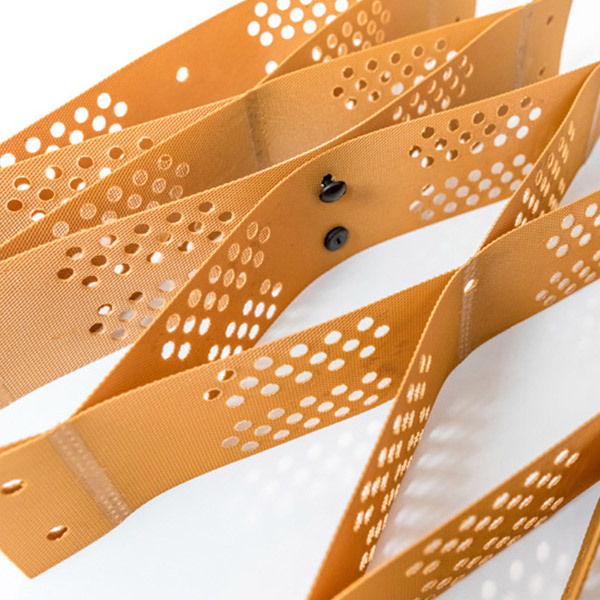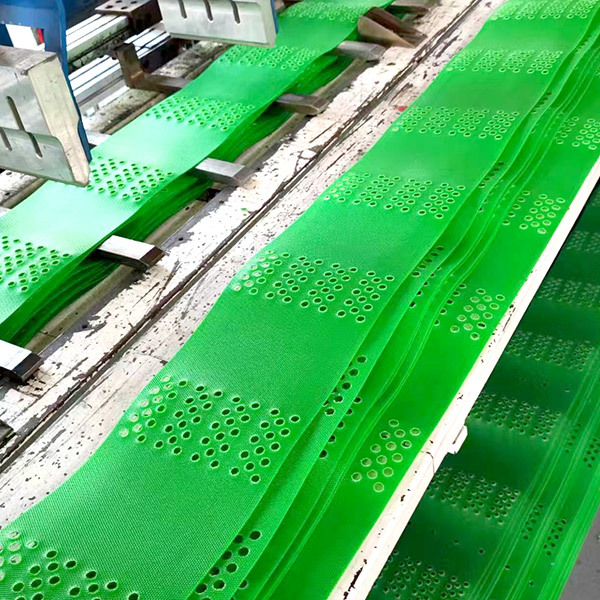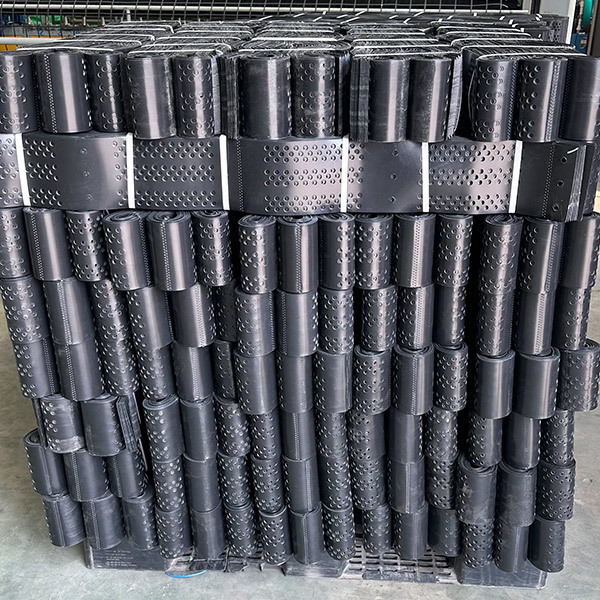The Impact of Basecore Geocell on Construction Site Durability: A Comprehensive Analysis
Time:
May 13,2025
The Impact of Basecore Geocell on Construction Site Durability Introduction to Basecore Geocell Basecore Geocell is a revolutionary material that has gained traction in the construction and civil engineering sectors. This multi-dimensional cellular confinement system is designed to enhance load distribution and provide structural support. By utilizing geocells, engineers can significantly improve
The Impact of Basecore Geocell on Construction Site Durability
Introduction to Basecore Geocell
Basecore Geocell is a revolutionary material that has gained traction in the construction and civil engineering sectors. This multi-dimensional cellular confinement system is designed to enhance load distribution and provide structural support. By utilizing geocells, engineers can significantly improve the durability and performance of construction sites. In this article, we will explore the multifaceted impact of Basecore Geocell on construction site durability, emphasizing its advantages and applications.
Understanding Construction Site Durability
Durability in construction refers to the ability of structures and materials to withstand stresses while maintaining their integrity over time. Factors affecting durability include environmental conditions, load-bearing requirements, and material properties. The integration of innovative materials like Basecore Geocell can dramatically enhance the durability of construction sites by offering improved load distribution, reduced erosion, and enhanced stability.
The Role of Geocells in Construction
Geocells, or cellular confinement systems, are three-dimensional structures made from high-density polyethylene (HDPE) or other similar materials. They are utilized to confine and reinforce soils and aggregates, creating a stable foundation for various applications, including roadways, retaining walls, and embankments. The unique design of geocells allows for the effective distribution of loads, which minimizes deformation and enhances overall performance.
Key Benefits of Basecore Geocell
The implementation of Basecore Geocell in construction projects offers numerous advantages. Below, we discuss the most notable benefits that contribute to enhanced durability:
1. Enhanced Load Distribution
Basecore Geocell distributes loads evenly across a broader area, reducing stress on the underlying soil. This capability is crucial in preventing issues such as settling and cracking, which can compromise the integrity of a structure over time.
2. Improved Soil Stability
By confining soil within its cells, Basecore Geocell enhances soil stability, particularly in weak or loose soil conditions. This improvement is vital for projects in areas prone to erosion or other geotechnical challenges.
3. Reduced Erosion and Sedimentation
Basecore Geocell effectively prevents soil erosion by providing structural support and reducing surface runoff. This characteristic is especially beneficial in environmentally sensitive areas where sedimentation can adversely affect water quality.
4. Cost-Effectiveness
Integrating Basecore Geocell can lead to significant cost savings over the life cycle of a project. By reducing the need for additional materials, maintenance, and repairs, project managers can improve their bottom line while ensuring long-lasting durability.
5. Versatility of Applications
Basecore Geocell is suitable for a wide variety of applications, including road construction, slope stabilization, and grass reinforcement. Its versatility makes it an invaluable asset for engineers and construction professionals.
6. Environmentally Friendly Solution
As a sustainable material, Basecore Geocell contributes to environmentally responsible construction practices. Its use reduces the need for traditional materials, minimizing environmental impact and promoting green building initiatives.
Applications of Basecore Geocell in Construction
The versatility of Basecore Geocell allows it to be employed in various construction applications. Here, we highlight some of the most common uses:
1. Road Construction and Rehabilitation
Basecore Geocell is extensively utilized in road construction projects. By reinforcing the subgrade, it enhances load-bearing capacity and extends the lifespan of roadways, reducing the need for frequent repairs.
2. Slope Stabilization
In areas susceptible to landslides or erosion, Basecore Geocell provides critical support to maintain slope integrity. This application is particularly beneficial for highway embankments and hillside developments.
3. Retaining Walls
Geocells can be used to create reinforced retaining walls, providing additional support and stability. This application is essential in preventing soil movement and ensuring the longevity of structures.
4. Grass Reinforcement
In landscaping applications, Basecore Geocell can support grass growth while preventing soil erosion. This use enhances aesthetics and promotes sustainability in green spaces.
5. Aggregate Base Stabilization
For construction projects requiring crushed stone or gravel bases, Basecore Geocell provides added stability, preventing movement and ensuring a robust foundation.
Technical Specifications of Basecore Geocell
Understanding the technical specifications of Basecore Geocell is crucial for its effective application in construction projects. Below are key attributes that contribute to its performance:
Material Composition
Basecore Geocell is typically made from high-density polyethylene (HDPE), known for its durability and resistance to environmental degradation. This material ensures that the geocell remains effective over an extended period.
Cell Size and Configuration
The size and configuration of geocell cells can vary based on the application. Common cell sizes range from 4 to 12 inches, allowing for customization based on project needs. The three-dimensional structure enhances load distribution and provides superior confinement.
Installation Considerations
Proper installation is vital for achieving the desired performance of Basecore Geocell. Factors such as soil preparation, cell expansion, and backfilling techniques must be carefully managed to ensure optimal results.
Challenges and Limitations of Basecore Geocell
While Basecore Geocell offers numerous benefits, it is essential to recognize potential challenges and limitations:
1. Initial Cost
The upfront cost of Basecore Geocell may be higher than traditional materials. However, the long-term savings associated with reduced maintenance and enhanced durability often justify this investment.
2. Installation Complexity
Proper installation requires skilled labor and may involve additional training for construction teams. Ensuring that the installation process is followed precisely is critical for achieving the intended benefits.
3. Environmental Considerations
Although Basecore Geocell is environmentally friendly, its production involves energy consumption and material use that should be considered in sustainability assessments.
Case Studies: Successful Implementation of Basecore Geocell
Several case studies illustrate the effectiveness of Basecore Geocell in enhancing construction site durability.
1. Highway Rehabilitation Project
A highway rehabilitation project in a flood-prone area utilized Basecore Geocell to reinforce the subgrade. As a result, the road experienced reduced deformation and extended lifespan, decreasing maintenance costs significantly.
2. Slope Stabilization in Residential Development
In a residential development next to a steep slope, Basecore Geocell was employed to stabilize the hill and prevent landslides. The project not only protected the homes but also improved the aesthetic appeal of the area.
Future Trends in Geocell Technology
The field of geocell technology is continually evolving. Future trends may include:
1. Advanced Materials
Research is ongoing into new materials that enhance the performance and sustainability of geocells, including bio-based options and recyclable materials.
2. Smart Geocells
Integration of smart technology into geocells may enable real-time monitoring of performance, allowing for proactive maintenance and improved project management.
3. Increased Collaboration
As the construction industry shifts towards collaboration, the use of geocell technology will likely become standard practice among construction professionals working towards sustainable solutions.
Frequently Asked Questions (FAQs)
1. What is Basecore Geocell?
Basecore Geocell is a cellular confinement system designed to enhance load distribution and soil stability in construction projects.
2. How does Basecore Geocell improve construction site durability?
By providing structural support and preventing soil erosion, Basecore Geocell significantly enhances the durability and lifespan of construction sites.
3. What types of projects can benefit from Basecore Geocell?
Basecore Geocell is suitable for road construction, slope stabilization, retaining walls, grass reinforcement, and aggregate base stabilization.
4. What are the installation requirements for Basecore Geocell?
Proper installation involves soil preparation, cell expansion, and backfilling techniques. Skilled labor is essential for achieving optimal results.
5. Are there any drawbacks to using Basecore Geocell?
While Basecore Geocell offers many benefits, initial costs and installation complexity can be challenges to consider.
Conclusion
The integration of Basecore Geocell in construction projects represents a significant advancement in enhancing site durability and performance. With its ability to improve load distribution, stabilize soil, and reduce erosion, Basecore Geocell provides a cost-effective and sustainable solution for various applications. As the construction industry continues to evolve, embracing innovative materials like Basecore Geocell will be crucial for achieving long-lasting, resilient structures. By understanding and leveraging the benefits of this technology, construction professionals can ensure the success and longevity of their projects.








